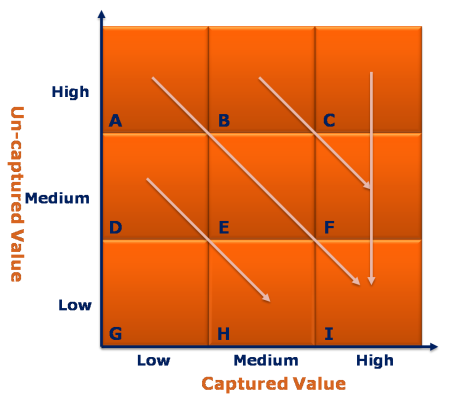We rarely have to argue with a client when we sagely advise them to ‘align marketing investment with current and potential customer value’. Nobody wants to squander budget on customers that have little interest in what we have to sell or do not have the capability to pay; that only annoys both sides of the customer-supplier relationship.
But it is surprisingly hard to move from this in-principle agreement to actually allocating different marketing spending to different groups of customers on the basis of their known and projected value. So how do you get started?
First you should have a bias towards action in your marketing. Having a plan that misses by 10% is not the mistake – in most cases it is inaction. Do some planning, then act, measure, adjust, repeat. Sometimes the best research is the campaign itself, structured to teach us what some customers do not respond to as it sells to those that do.
This bias towards action also causes us to apply Occam’s razor to reporting on marketing performance – the simplest explanation is accepted until proven false. Only look at data that directly influences the marketing decisions you have to make and ignore everything else. This makes a complicated business that little bit less cluttered and allows for more direct decision making and action.
We are not condoning a ‘Ready – Shoot – Aim’ school of marketing, so it is important to make sure your marketing actions are consistent with corporate goals. Corporate goals are not always as straightforward as ‘maximize profit’.
It’s a good idea to write them down, corporate goals first, then an explicit link to your customer goals. Keeps you focused on doing things with customers that support the overall business objectives and makes budget easier to get!

Customers definitely go through a life cycle in their relationship with you. At different rates and at different times, but knowing where they are in their life cycle (from your perspective) is really important in determining how you should best invest in them. Or if you should invest at all.
As a simplistic example, in this life cycle we would probably
- invest in new customers in an ‘on-boarding’ program that increases the chances they will start a relationship or dialogue with us
- look for falling activity from the ’silent attrition’ customers and try to excite them to renew their relationship
- reinforce the benefits we deliver our Ideal customers
- put the ‘rescue team’ in touch with high value Ideal Customers who look to be leaving because they are unhappy…
you get the message. Treating different customers differently based on where they are in their life cycle is the idea.

So the life cycle stage tells us the macro customer attributes we should respond to, but in between new and exiting there is another tool we find useful as we determine the best action we can take for different groups of customers; the customer value map.
The customer value map assists you to determine the best marketing strategy for each of 9 groups of customers that are classified by
- Captured value and
- Un-captured value.
It also avoids interminable arguments about how to calculate Life Time Value (LTV or CLV) and allows you to get on with marketing to customers. When used with a ‘marketing allowable’ model (a future post subject) it also gives you a good view of how much you can afford to invest in each customer group.

Captured value is the value that a customer provides to your organization right now. Revenue, gross margin, allocated profit… whatever best fits your business. If you are contractually sure and / or know attrition rates include a few years of this value in the customer’s score.
Uncaptured value is the value that you could reasonably expect to derive from the customer; the rest of the wallet. Calculating this is organization specific but a banking example may help; you know the accounts and income a customer has with you and can reasonably estimate the total accounts such a customer will have, possibly with competitors. The difference is uncaptured value.
Populate the map with you customers and it becomes easier to see what sort of programs you should run for each section. Customers in Section G are low value low potential; do little if anything. Customers in A are high potential; focus on care, cross selling and up-selling. Customers in I should be in retention programs… etc.
Hopefully you can see that mapping your customers this way can quickly allow you to profile them and make sure you optimise your investments for each sector. We have had particularly good results with this approach with general insurance and banking clients.
Enough for one post I think. What do you think – have you tried including potential customer value in your segmentation this way?
by timwtyler



